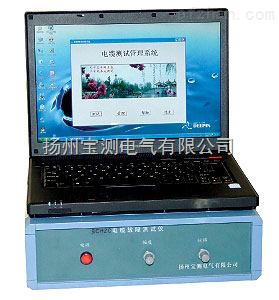**Cable Fault Testers: An Overview**
A cable fault tester is a crucial tool used to identify and locate faults in electrical cables. Over the years, the number and variety of these instruments have significantly increased. Today, the market offers a wide range of cable fault testers, each designed for specific applications. In addition to the commonly used general-purpose cable fault testers, there are specialized models such as buried cable fault detectors, street lamp cable fault testers, medium and low voltage cable testers, ground fault testers for cables, and even mine-specific cable fault testers.

**Cable Fault Testing Procedures and Key Considerations**
1. **Basic Steps for High-Voltage Cable Fault Testing**
The process of testing high-voltage cables typically follows several key steps:
- **Understanding the Fault Cause**: Before starting, it's important to determine the nature of the fault. Was it caused by an operational issue or a pre-test? Is the cable new or old? How long has it been in use? Does it contain any mid-joints? Has it ever experienced a failure? Where is the cable located—directly buried or in a trench? What type of cable is it?
- **Disconnection and Safety Check**: Ensure both ends of the cable are disconnected from other circuits to prevent accidental energization. The surrounding area should be safe and free from hazards.
- **Discharge Procedures**: Always discharge the cable before connecting any test equipment. Connect the phase lines to ground first, then short-circuit them. This applies not only to the cable but also to other components like capacitors and test transformers. Discharging is essential before removing any connections.
- **Low-Voltage Pulse Testing**: Begin with the low-voltage pulse function of the flash detector. Perform a full-length test on each phase and compare the waveforms. For high-impedance faults, the waveforms are usually similar across all phases. However, for low-impedance or open-phase faults, the waveform will differ, allowing for direct measurement of the fault distance.
- **High-Voltage Flashover Testing**: Whether the fault is high or low impedance, the high-voltage flashover method can be used. It’s especially useful for verifying results from low-voltage tests and pinpointing the exact location of the fault.
- **Fault Localization**: After determining the approximate fault distance, use a sound-magnetic synchronous fixed point instrument to locate the exact position while also detecting the cable path.
2. **Safety Considerations During Testing**
Safety during cable fault testing is critical and includes both operator safety and equipment protection.
- **Grounding Practices**: Use "one-point grounding" for high-voltage testing, ensuring that the high-voltage transformer and capacitor are directly connected to the cable armor. Avoid long grounding wires to maintain signal integrity. Separate protective grounding for test instruments is recommended to ensure operator safety.
- **Proper Discharging**: When discharging high-voltage components, always use a special discharge rod with resistance. Avoid direct discharge using an insulated rod, as this can damage the capacitor.
- **DC Power Supply Usage**: If the flash detector supports DC power, prefer it for high-voltage testing. This helps avoid potential issues caused by AC power surges affecting the tester.
By following these procedures and prioritizing safety, technicians can efficiently and accurately identify and resolve cable faults.
Die Casting
Die casting is a metal casting process that involves forcing molten metal under high pressure into a mould cavity. The mould cavity, also known as a die, is typically made of hardened steel and is custom-designed to produce the desired shape of the final product.
The process begins with melting the metal, usually non-ferrous metals such as zinc, aluminum, magnesium, or copper alloys, in a furnace. Once the metal reaches the desired temperature, it is injected into the mold cavity at high pressure using a hydraulic or mechanical press.
The high pressure helps to quickly fill the mold cavity and ensures that the molten metal solidifies rapidly to produce precise and complex shapes with fine surface details. After the metal solidifies, the mold is opened, and the casting is ejected from the die.
Die casting is commonly used to produce a wide range of metal components and products with high dimensional accuracy, excellent surface finish, and tight tolerances. It is widely employed in industries such as automotive, aerospace, electronics, and consumer goods manufacturing.
alloy die casting,gravity die casting,gravity casting,high pressure die casting,pressure die casting
Taiyuan Simis Investment Casting Co., Ltd , https://www.precision-casting.biz